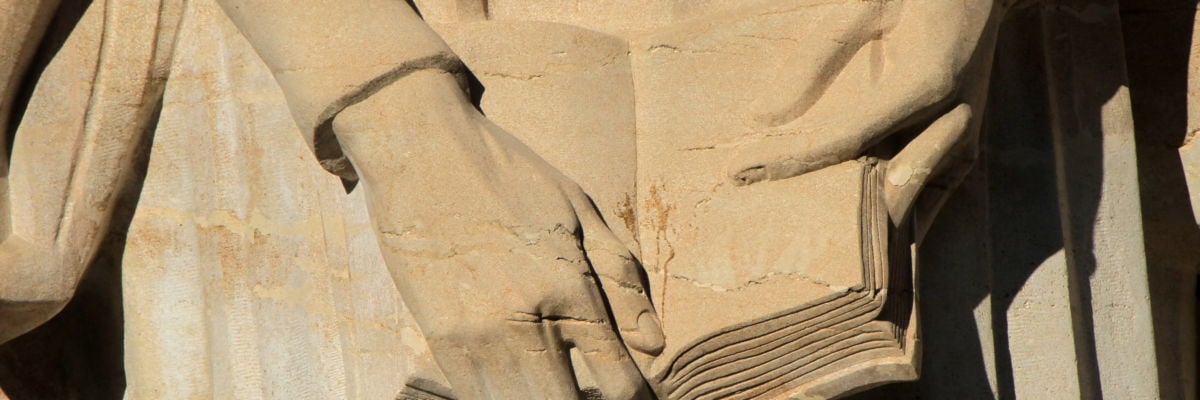
In Part 1 and Part 2 of this article, I described my shocking discovery, as a Protestant, of Calvin’s gnostic argument for the canon of Scripture, as argued in the French Confession of Faith and his Institutes of the Christian Religion.
That was not the end of the matter. As I said in Part 1, I grew up in an area that had many Mormons—members of what they call the Church of Jesus Christ of Latter-Day Saints (LDS). One of my dearest friends was even an LDS missionary.
When LDS evangelize, one of the key things they do is request that a prospective convert read the Book of Mormon, which they call “another revelation of Jesus Christ,” and ask God if it is true. Following Joseph Smith—the man they claim was a prophet—they appeal to James 1:5 for justification: “If any of you lacks wisdom, let him ask God, who gives to all men generously and without reproaching, and it will be given him.” They believe that God will reveal to you that it is true through what is often called a burning in the bosom—a direct revelation by the Spirit.
Sound familiar?
Another set of LDS scriptures, Doctrine and Covenants (9:8-9), describes this “burning in the bosom” as follows:
But, behold, I say unto you, that you must study it [the Book of Mormon] out in your mind; then you must ask me if it be right, and if it is right I will cause that your bosom shall burn within you; therefore, you shall feel that it is right.
But if it be not right you shall have no such feelings, but you shall have a stupor of thought that shall cause you to forget the thing which is wrong; therefore, you cannot write that which is sacred save it be given you from me.
How is this different from Calvin’s argument that “we feel a divine energy living and breathing in it”? What if—as often occurs—a Muslim or anyone else of another religion makes the same argument for the Quran or his respective scriptures?
Could actual God-breathed Scripture possibly evoke such experiences? Yes. The Catholic Church does not deny and has never denied this. But that is not the point. The point is that we must reconcile such dogmatic claims, and if there is no basis for doing so outside an appeal to an individual revelation, then the notion of public revelation becomes absurd and untenable.
This LDS doctrine of a burning in the bosom was originally given to Oliver Cowdery, who assisted Joseph Smith in supposedly translating the Book of Mormon. The LDS provide the following official commentary on this verse in a “Student Manual,” making clear that this burning in the bosom applies to others as well:
This process of receiving revelation can be of value to all Saints. President Joseph Fielding Smith explained that “a similar privilege is given to any member of the Church who seeks knowledge in the spirit of prayer and faith. The Lord will cause the feeling of security and truth to take hold of the individual and burn within the bosom, and there will be an overwhelming feeling that the thing is right. . . .
When you have been listening to some inspired speaker who has presented a new thought to you, have you not felt that burning within and the satisfaction in your heart that this new thought is true? On the other hand, have you experienced the feeling of stupor, gloom, or uneasiness when some thought has been presented which was in conflict with the revealed word of the Lord, and you have felt by this manifestation of the Spirit that what was said is not true? It is a great gift, which all may receive, to have this spirit of discernment, or revelation, for it is the spirit of revelation” (Church History and Modern Revelation, 1:51).
Hence the common practice of LDS missionaries to ask people to read the Book of Mormon and request this burning in the bosom themselves.
Given my familiarity with this LDS method of “proving” their scriptures, when I saw Calvin’s arguments, I immediately detected the substantial similarity between his appeal to the “inward illumination of the Holy Spirit” for his canon of Scripture and the LDS appeal to the burning in the bosom for theirs.
How do the two differ? In reality, they do not. Both are fundamentally circular and gnostic appeals that sidestep public apostolic authority, reason, and logic, for the sake of founding a new religion.
Though I had read a decent number of Calvin’s writings as a Protestant, I had either never read—or perhaps never noticed—the blatantly gnostic argument for his canon of Scripture until, as I described in Part 1, St. Francis de Sales pointed it out to me. Calvin’s arguments are essentially indistinguishable from those of the LDS.
If Person A appeals to an “inward illumination” for Canon A, and Person B appeals to a “burning in the bosom” for Canon B, and both disclaim the necessity of argument, history, and public authority, how are we to know which (if either) has the true canon of Scripture?
Person A and Person B don’t even have to be a Calvinist and a Mormon. They could be John Calvin and St. Augustine, or Martin Luther and St. Athanasius, or Ulrich Zwingli and the Council of Trent, or even one of the Church Fathers and one of the various local Church councils who occasionally had somewhat different canon lists among themselves.
How can the right canon be identified not only for all Christians, but for all people to whom Christians are witnesses of the gospel?
There are only two possible answer to this question: a private appeal or a public appeal; a gnostic appeal to “inward illumination”/“burning in the bosom” or the public authority of a divinely authorized witness and teacher.
That public authority, that divinely authorized witness and teacher, is the Catholic Church, which was given the power to “bind and loose” (render judgment) by Jesus Christ.
Contrary to Calvin’s gross mischaracterization that the Church’s authority somehow “makes” what was not Scripture into Scripture by its declaration (an argument never once made by the Church), the authority of the Church rather recognizes Scripture, as St. John the Baptist, St. Peter, and others appointed by God recognized Jesus Christ as the Messiah, and upon this basis declared it to the rest of the world.
As God’s duly authorized representative on earth, the Church publicly declares to the world what the canon of Scripture is so that all may know it in a public manner, thereby guaranteeing them that what the Catholic Church teaches is the purpose of its Magisterium (teaching authority): “the objective possibility of professing the true faith without error” (CCC 890).
So long as anyone can appeal to the inward illumination or burning in the bosom of the “Holy Spirit” as their source for any article of faith, then the possibility of public religion is gone. Christianity becomes essentially gnostic from that moment forward—a matter of private individuals claiming to have received an inward illumination from God (given only to God’s “elect,” of course), hoping to convince other private individuals through what can only be described as self-authentication.
This Protestant approach to the canon of Scripture laid the theological groundwork for the spirit of our age. What began as “self-authentication” in religious dogma became “self-authentication” in philosophy (“I think, therefore I am”), then morals, and now even one’s own sex.
These are the fruits (quite contrary to their intentions) of a process in large measure catalyzed by Calvin and his ilk. Calvin did not recognize the profound incoherence of his own position. Those who followed in his footsteps have thereby been condemned to witness, without understanding, a civilizational degeneration that simply took the logic of their own theology many steps farther than they were willing to go themselves.
However, we may all rest assured that the one true religion, the Catholic faith, far from relying on the gnostic appeals of a self-authenticating “elect” to individualized revelation, appeals instead to the public witness, history, and authoritative teaching of Christ’s Catholic Church, the “city on a hill that cannot be hidden,” as received now for 2,000 years.



